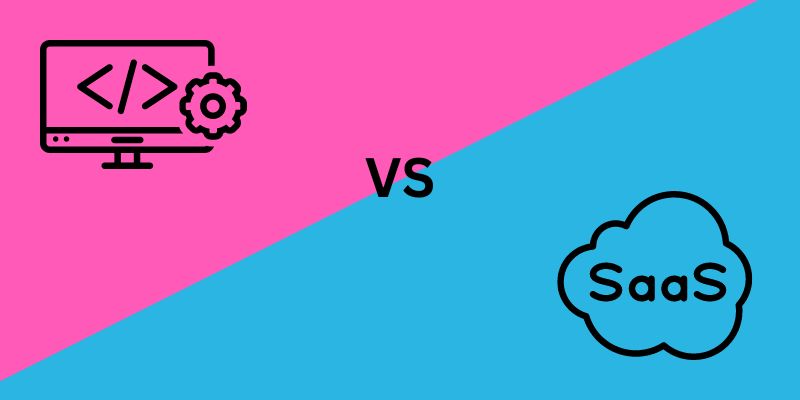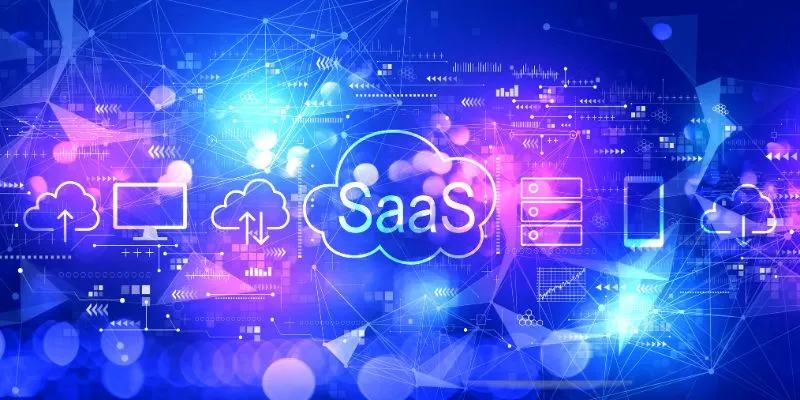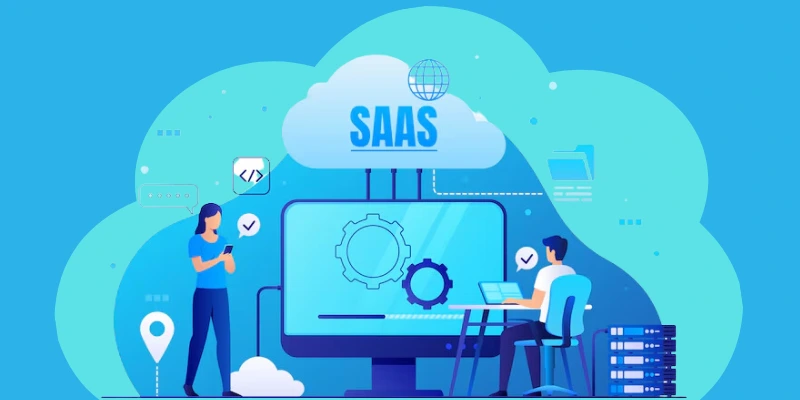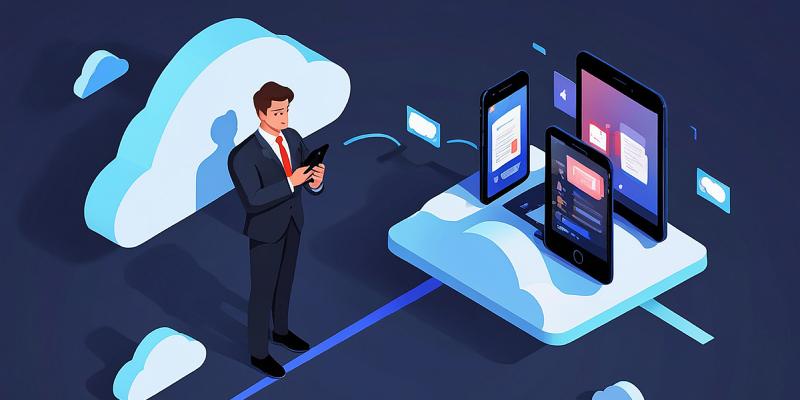Over the years, software development has experienced a radical transformation from desktop-style programs to downloadable applications to cloud computing services. This has resulted in two primary software delivery models: Software as a Service (SaaS) and traditional business-model-type offerings. Each offers distinct advantages and drawbacks.
There are distinct advantages and drawbacks to choosing either SaaS Software Development or custom-built software; choosing one could significantly impact a company's performance. Knowing the differences is more essential than ever when making such decisions for your own organization. Let us look at both options together to assist in selecting what is most suitable.
What Is Software Development?
Software development can be described as the procedure of conceiving, constructing, testing, and maintaining computer software and programs. This broad field of study combines creativity and problem-solving skills to create software that meets specific requirements. Software developers, often coders or programmers, utilize various languages and programs to design solutions for customers or companies.
The development of advanced software requires more than mastering the programming language. It involves applying fundamental principles of computer science, like algorithmic data structures, algorithms, and design patterns, to create efficient, scalable software updates in the long run. It's about finding the appropriate language frameworks, libraries, or frameworks for the issue you're trying to solve. Understanding how to make tradeoffs is just as important as understanding the syntax.
Advantages Of Software Development
Although software as a service has many advantages, building a custom program offers businesses an entire system specifically tailored to their needs. We'll explore the benefits of developing Software for SMEs, startups, and enterprises.
Custom-designed to fit your requirements. The power of custom software development lies in its capacity to offer specific solutions that meet your company's particular requirements, distinctive features, and long-term goals.
-
-
Resilient And flexible
-
If your business grows, your software can be modified to adapt to growth and change, ensuring your business is always ahead of your competition.
-
-
Control And ownership
-
Custom software development means you are the complete software owner, allowing you to alter and disperse its software.
-
-
Long-Term Cost Efficiency
-
Although the initial investment required in developing software software could be more expensive than SaaS, it is often proven to be cheaper over the long term. Building your software is necessary to cover recurring subscription costs, making it an excellent option for companies that intend to utilize the program for long periods. In addition, the custom software will change and evolve to meet your needs and your business's. This can reduce the necessity for expensive migrations or upgrades.
Read Also: Software development cost for SaaS, cloud, and on-premise solutions
What Is SaaS?
SaaS, or Software-as-a-Service, is a cloud-based software delivery model used by businesses of all sizes. In contrast to traditional on-premise software distribution methods, SaaS allows users to connect to their data on any device with internet access and an internet browser. The service provider is responsible for the SaaS model's database, servers, and app software. It relieves customers of the load of a large number of equipment requirements as well as specific IT-related tasks.
SaaS solutions are accessible over the Internet and don't require installation or maintenance. They keep the software and eliminate every bug, allowing businesses to concentrate on core activities. SaaS services are generally affordable and offered as subscriptions, so they don't require substantial initial investment costs.
One of the main advantages of SaaS is the ability for enterprises to take advantage of software technology and efficiency without software creating or hosting the software. However, changes to a SaaS tool's functionality can be a challenge as it may not be able to produce precisely what businesses want. Despite these limitations, SaaS tools remain popular and beneficial for various companies.
Advantages Of SaaS
The model has many benefits, making it a popular alternative for entrepreneurs, small companies, and even bigger companies. Explore the advantages and drawbacks of customized SaaS Development.
-
-
Quick And Lightning-Fast Setting
-
Custom SaaS solutions represent the pinnacle of plug-and-play. You don't need lengthy installations or large IT staff—companies can profit from SaaS solutions immediately!
-
-
Budget-Friendly
-
Because you don't create the entire system from scratch, SaaS often has less upfront cost, which makes it a preferred choice for growing companies.
-
-
Automatic Updates
-
Say goodbye to manual updates and maintenance. SaaS businesses handle all those behind-the-scenes and ensure that your software stays up-to-date without any effort from you.
SaaS vs. Software Development

Let’s examine the key difference between SaaS As a Service and software development.
Installation And Access
Access to and deployment is a significant area in which SaaS and conventional software models differentiate. The installation procedure for SaaS services is typically straightforward since it is hosted in the cloud. The users can use an internet browser or light client program. You don't need to do lengthy installation on each device. This means that it makes SaaS extremely accessible since users can access SaaS software anywhere they can access the internet, making it a possible option for distributed or remote teams. SaaS is also highly flexible. If your company grows, expanding your users or modifying your service's features will be accessible without worrying about the difficulties of sizing up your server.
However, each device's user must install conventional software in a central location. Installing it is often complex and requires more time, effort, and time, effort, and technical resources. Access to software can be limited only to its original installation point. While this might initially feel restrictive, restricting software can provide speed and security benefits in environments without fast internet connections.
Cost Structure
Cost structures for SaaS Software Development Solutions and traditional software differ. SaaS works annually, so users pay a regular cost to access software. It is a subscription-based model that makes it cheaper to purchase upfront because there's no requirement for an initial considerable capital expense. But over a long time frame, these expenses can increase. Businesses must ensure they make the most of their software over time.
In contrast, traditional software requires a substantial investment to obtain the same license. The initial investment may be significant; however, once the software is bought, it can be for as long as you want, making it more affordable in the long term. There may be additional ongoing expenses to maintain, upgrade, and support that should be accounted for in the overall cost of owning the software.
Updates And Maintains Software
Maintenance and upgrades also differ between SaaS and conventional software. When you use Software As a Service, the company handles every aspect of maintenance, such as the release of patches, updating the software to fix bugs, and software security patches. The technical load is taken away from the user, ensuring they can always access the latest and safest version of the software and do not have software about downtime or maintenance.
Unlike traditional software, users are responsible for maintaining it. This means updating and patching, troubleshooting any issues, and ensuring that the software is compatible with software devices and systems. This gives you greater control over the software's environment; software requires more technical expertise and resources. Firms using traditional software must have the proper people and support to handle these tasks.
Integration And Customization
SaaS services generally provide various customization options, allowing users to modify the application to meet their requirements with predefined limits. The parameters could include brand elements, user roles and rights, workflow configurations, etc. Since SaaS applications must maintain the same framework across every user, the options to customize them may be less than traditional software. Many SaaS companies offer APIs and built-in integrations to other well-known SaaS applications. This makes it simpler for companies to build a unified software environment.
Conversely, conventional software typically allows customization since the program is installed on the user's hardware. This can be beneficial for organizations that have unique requirements. However, extensive customization may create more complexity and require excellent technical knowledge. This additional programming or development also increases expenses and complexity.
Security And Compliance Of Data
In this day and age of massive threat of data breaches and stringent rules in data security, compliance, and data security are crucial considerations when choosing software. SaaS is software to store data on the service provider's servers, making security the service provider's primary obligation. SaaS companies typically have robust security procedures, including data encryption, secured data centers, and regular security audits. They usually also adhere to the relevant standards of their industry and regulations, including GDPR, HIPAA, and HIPAA, which provide a degree of confidence to their customers.
However, the downside is that the business has little control over its information and needs to rely on its provider to secure the data. It is essential to scrutinize the SaaS provider's security credentials and conformity certifications before agreeing.
Unlike traditional software, business owners can access their information and its security. This is a plus, particularly for companies that operate in sectors with particular standards for security or compliance. But, assuming complete responsibility for the security of your data requires the business to put money into the appropriate security systems and know-how. It includes encryption of data and firewalls, as well as regular security audits and compliance with applicable regulations. The costs and complexity associated with data security should not be overlooked and must be considered in the overall expense of owning conventional software.
Why Is SaaS An Evolution?
Due to considerable changes in software development, SaaS is an advancement because it differs from the standard software model. As described previously, you must buy hardware, recruit IT specialists, and pay for software licenses when you use conventional software. However, SaaS software is an efficient and affordable method to develop storage, maintain, and create software without the required hardware or internal IT staff.
We'll look at the reasons SaaS is frequently regarded as the new standard for the development of software:
Accessibility
It doesn’t require massive infrastructure and equipment on the premises. Instead, it offers access to software through the cloud. The software allows users to work from any location connected to the internet. This is a significant benefit for individuals and companies that must be flexible in their workplaces.
Affordability
Older versions of software usually come at an upfront fee. When you purchased the program, the software was yours. This also meant that you were restricted to the previous version, even if technological advancements accelerated. Upgrades to your software were expensive. Software is needed to buy upgrades by contacting the developers.
SaaS, however, runs using a subscription system that offers yearly or monthly payment options. It ensures that customers always get access to the most recent software upgrades without the hassle of spending money on costly updates.
Scalability
SaaS services allow customers to pay only for the capabilities and services they need. The ability to scale is highly beneficial for businesses and individuals. Start small and grow as your needs increase, which makes it an affordable and flexible option.
Security
SaaS Development Company prioritize data security. They are committed to protecting the user's data and often implement strict security measures and conformity requirements to safeguard sensitive data. This offers a distinct benefit over conventional software in which security is the primary duty of the individual users.
Updates And Support
With SaaS software, updates can be automated and smooth. Customers don't need to think about installing updates manually or trying to resolve compatibility problems. Furthermore, SaaS providers typically assist customers with any technical issue, which can further enhance the customer experience.
The Choice: SaaS Or Traditional Software Development?
Choosing between software and conventional software is based on many factors, including your company's requirements, resources, and strategic objectives. Suppose your business wants flexibility, lower upfront cost, and ease of usage and would like to allow a third-party service company to access your information. In that case, SaaS could likely be the best option.
If your company prefers control, flexibility, long-term efficiency, and the ability to invest in infrastructure and know-how, conventional software may be more suitable. Companies could find the hybrid method, which combines SaaS and traditional software, the best solution requirements. It allows you to profit from both approaches' advantages while minimizing their drawbacks.
The realm of software delivery does not have a standard-fit-all model. When you understand the significant differences between SaaS and conventional software, you can choose software that aligns with your company's specific needs and will set you up to succeed in the digital age.
Using SaaS and Custom Software Simultaneously
You must choose between SaaS and customized software to run a successful business. This shouldn't be software. Businesses' possibilities for the future are endless, and your business will require every advantage it can gain. This is why combining SaaS and custom Software greatly benefits your business's growth.
Even though this option could cost more money, you'll be able to enjoy the best of both. It's the timely update of SaaS and the utmost security offered by custom software. This allows the software to be separated into parts. Technical staff can manage sensitive tasks using custom software, whereas other staff members can use simple usability to handle more generalized tasks.
Conclusion
The controversy between SaaS software development services and conventional software does not revolve around what is superior but about which is more appropriate. The advantages of SaaS can't be ignored, as it is evident that it has gained an advantage in the software world. The accessibility, scalability of automated updates, and improved security explain why SaaS development services have emerged as the most preferred option for businesses and users. With the advancement of technology and advancement, the popularity of SaaS will continue to expand as it provides many new options for users worldwide.
It's evident that there's no universal solution to the customized SaaS and software development argument. This boils down to examining your company's requirements and budget and selecting the solution that best suits your business's vision and objectives. If you can find the perfect equilibrium, you'll be on the way to making your business an unstoppable force that needs to be faced with!












Share this blog